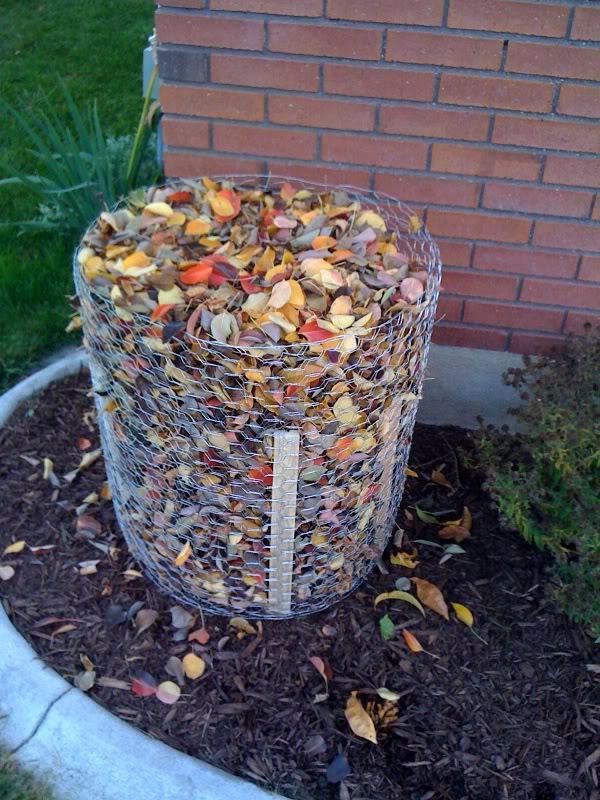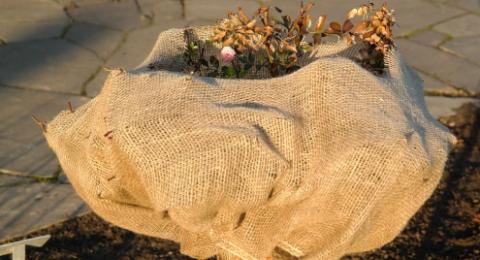Winter protection is often necessary for most types of garden roses. The extent of protection depends on the type of rose and its location in the garden. Choose only types hardy enough to survive the coldest average winter temperatures in your growing zone.
Remember that the main goal with winter protection of roses is to keep the plant, especially the crown and lower portion of the canes, uniformly cold throughout the coldest winter months. Cold damage occurs due to plant tissues alternating between freezing and thawing, so our goals as rose gardeners is to minimize this occurrence.
Heavy fall pruning of bush roses could mean loss of the entire plant in the event of a severe winter. By leaving 18”- 24" of healthy canes under mulch you can expect new growth and healthy canes in spring. However, it is advisable to cut extremely long stems back to prevent their whipping about in winter winds and perhaps loosening the soil mound around the rose crown. A good rule for tea roses is to cut less in the fall and more heavily in the spring.
Hybrid Tea and Floribunda Roses
Avoid applying winter protection until hard frosts have killed any remaining leaves. Once the leaves have fallen, take special care to clean up and dispose of leaves and diseased or damaged stems to minimize risks of disease carry over. Consider allowing rose plants to go through several nights with temperatures in the mid-teens to ensure dormancy prior to protecting. After this period, use any of the following procedures to protect hybrid tea and floribunda roses.
Mounding Soil
- Prune back vigorous canes which may be damaged by winter winds. Make pruning cuts 1/4" above an outward pointing bud so that new growth will be started in the right direction.
- Tie the canes together with twine.
- Mound soil around the base of the plant to a height of 10-12". Bring in additional soil; do not rake it up from the base of the plant.

Tarpaper or Wire Mesh Collars
- Prune only to adjust the size of the plant to its winter covering.
- Tie the canes together with twine.
- Make a collar from heavy tarpaper or hardware cloth (available at hardware stores) and fasten edges together to form a cylinder.
- Place the collar over the plant and fill it with a coarse mulching material such as peat moss, pine bark, shredded leaves, or straw.
- When the collar is filled, tie pieces of burlap over the top to keep the mulch in place.
- Mound soil to a depth of 10”-12" around the base of the collar.

Wrapping
- No pruning is necessary, other than to remove canes rubbing together and those growing inward toward the center of the bush.
- Tie the canes together with twine.
- Bind with evergreen boughs and burlap.
- Mound soil to a depth of 6”-8” around the base.

Climbing Roses
Climbing roses should be pruned in midsummer after the plants have stopped blooming and all the blooms have faded. Prune all the flowering canes close to the roots so that new growth will harden off by winter. Climbing roses will still need protection from winter injury. Depending on where the roses are located, either of the following procedures can be used:
Wrapping
If your roses are growing in a fairly protected area out of harsh winds and extreme temperatures, wrapping with burlap or evergreen boughs will give sufficient winter protection.
- After the first hard frost of the fall, secure canes to their support and prune off long ends.
- Next, wrap the canes in burlap, straw, or evergreen boughs and tie with twine.
- Mound 10”-12” of soil around the base of the plant.
Mounding Soil
In extremely cold areas or open areas where winter damage is common, the best way to protect a climbing rose is to shield the entire plant with earth.
- After the first hard frost of the fall, detach the plant from its support and tie its canes together.
- Bend the canes to the ground arching them near the plant’s base to avoid breaking.
- Pin the canes down with crossed stakes to heel in canes.
- Mound the soil over the entire plant and drive a stake into the ground at each corner of the mound to mark the spot.
Updated: November 2016
Extension Services & Tools That Help NH Farmers Grow
Newsletters: Choose from our many newsletters for production agriculture
Receive Pest Text Alerts - Text UNHIPM to (866) 645-7010



